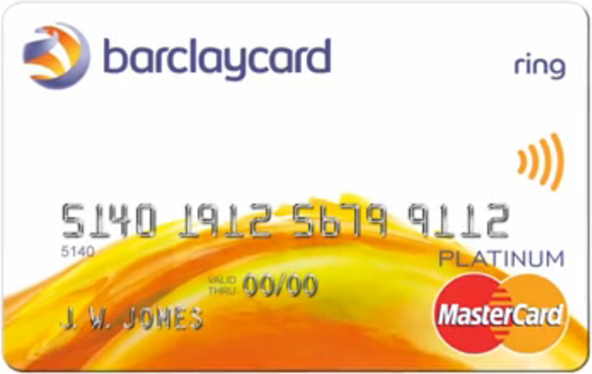Why We Don’t Work with Small Merchants

In my posts describing how we work with merchant account applicants, I have often alluded to our size requirement — we typically like to work with merchants with at least some previous processing experience and a current monthly processing volume of at least $100,000. That wasn’t always the case — in fact, when we began all these years ago, our focus were new businesses and very small operations. However, experience taught us that serving this segment of the market was an extremely expensive and time-consuming proposition. And while we wouldn’t mind investing whatever resources were needed to make our project a success, the trouble was that the return was very low, not nearly enough to justify the effort. It took us a good few years and multiple changes of strategy, but eventually we realized that our approach wasn’t working and we decided to focus on a different segment. The new strategy worked and looking back, I just can’t understand what took us so long.
This past week I was reminded of our past mistakes when I decided to work on the application of a merchant who clearly did not comply with our requirements: his business was both too small and too inexperienced for us. Unsurprisingly, it turned out to be an error on my part. Of course I knew that the merchant was unqualified, but it was a slow day and I thought that the underwriting process would be a quick and straightforward one, so why not do it? Well, if it worked like that, our initial strategy would have succeeded, wouldn’t it? In the event, I was reminded of just how well we had done when we shifted our focus away from this merchant segment. Here is what took place.
Getting Rates
That is how the merchant had titled his inquiry and that alone should have been sufficient to convince me to send it into the “Unqualified Inquiries” folder. This was an e-commerce merchant selling nutraceuticals and his volume was less than $20,000 per month, which, as I already noted, was too low. But I knew I could get him all approved and set up within a few days, so I decided to give it a go. I made him a proposal, he accepted it and the account was approved within two days. It was time to proceed with the set-up and this is when the fun began. The merchant sent me the following email:
I had a few questions before we moved forward with getting things rolling.
- What is the reserve % that will be held on this account?
- If our monthly volume ever dips below $15k or we get a transaction that is over $450, are there any penalties/fees?
- We’ve had merchants in the past approve of our account and then come back to us a week or two after we finish getting the site integrated to close our account.?á Is there any chance of that happening with you guys?
- I am currently with a merchant [account] at the moment with Wells Fargo as the bank, but I was hoping to get a better rate for our transactions and lower fees.?á Do you by any chance have a list of the rates as well as all fees for this merchant account?
If everything looks good, I will be sure to send all of the necessary documentation over to you asap.
Now, these are all issues that should have been discussed prior to initiating the application process, and they were. The merchant received a detailed list of all rates and fees associated with his account and he signed it! Needless to say, I was unhappy with the email, but responded by re-sending to the merchant the contract that he signed, highlighting the pricing section. At that point he asked me to compare the pricing I gave him to the one he had with his existing processor. I won’t bother you my full reply, but here is the most important part:
Your current discount rate is 7.95% for?áqualified?átransactions and 9.7% (7.95% + 1.75%) for?ánon-qualified, which is what most of your current transactions are processed at.?á Your rate with us is… 4% plus interchange, in effect 4.05% – 6.25% or so?á– please refer to our earlier exchange for details. The per-transaction fee is the same thing, so when you add interchange it will go to something like $0.25.
To which I received the following reply:
My current merchant took the time to chat with me for a while today to go over the details of your offering and they said they can provide me with a better offer than the one that came through from you guys. ?áI have a call with them tomorrow to go over the details, but I was explained thoroughly that your offer actually doesn’t beat what I have right now because 99% of our transactions are via credit card.
Being that I haven’t processed any payments through you guys yet, I will most likely want to withdraw this application and stick with my current merchant. What is the process for me to do so?
OK, at that point I threw my hands in the air, gave up and promised myself never to do it again. Even if most of this merchant’s transactions were classified as “qualified” by his current processor, which they weren’t, his lower rate would still be more than a percentage point higher than the highest rate at which a transaction would be processed under my proposal. And yet, he allowed himself to be convinced that his current pricing was more favorable.
Never Again
So at this point I had the option of arguing with the merchant that 7.95 percent (not to mention 9.7 percent) was indeed more than 6.25 percent or just facilitate his request to withdraw his (already approved) application. I chose the latter. Yes, it may all have been just a ploy on the part of the merchant to get an even better pricing — it probably was — but it wasn’t worth playing along. I mean, do I really want to be arguing with people about things like that, whether or not they believe in what they are saying? But more importantly, this is the level of negotiation / argumentation you only see at small and inexperienced merchants. Which is why we don’t work with them.
The type of merchants we work with now — high-volume, high-risk international businesses — present different challenges. The biggest one is finding the right acquiring bank for them and we often have to talk to a dozen of banks around the world (or more) before we can find what we are looking for. Even then the application process can drag on for weeks or even months and sometimes we have to look for another bank after the initial one pulls out of the deal. But this is what we want to be spending our time on and we are good at it. Moreover, our clients have been in business for long enough to understand that expertise comes at a cost and are willing to pay for it. Yes, they do want to get the best pricing available, but have invested the time to research the different pricing structures and at the very least will not be persuaded that 7.95 percent is less than 6.25 percent.
The Takeaway
Working with high-risk businesses is very hard. To begin with, we get contacted by merchants from all over the world and so we have to deal with different languages, jurisdictions, cultures, business structures, etc. Moreover, fraud is an ever-present concern and being able to identify a legitimate business in a place you know little about is not exactly trivial. So there are huge challenges, but once we’ve done our due diligence, we can be reasonably certain that we are dealing with experienced business people who have their priorities right. That, unfortunately, cannot be said about small, inexperienced merchants.
Image credit: Capital.ro.


